Jupiter is the largest planet in the solar system, followed by Saturn. Some astronomers speculate that Jupiter, due to its vast size, serves as a protective force for Earth. With its immense mass, the planet exerts a strong gravitational pull, altering the paths of potentially hazardous asteroids and safeguarding our planet from potential impact.
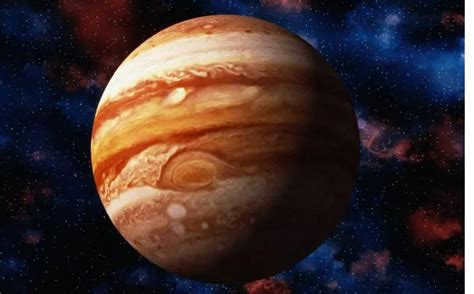

Table of Contents:
- Which planet is larger, Mars, Saturn, or Jupiter?
- Which planet has the largest size?
- Which planet is bigger, Jupiter or Mars?
- What is the coldest planet in the universe?
- Which planet is larger, Jupiter, Pluto, Mars, or Saturn?
- What is the largest star in our solar system?
- Can humans live on Jupiter?
- Which planet is heavier, Saturn or Jupiter?
Which planet is the largest: Mars, Saturn, or Jupiter?
Out of all the known planets, there is one that can rival the Sun in grandeur. That planet is Jupiter, the largest planet in the solar system, named after the Roman god.
What is the largest planet in the universe?
The largest planet in the universe is not Jupiter, but rather the exoplanet WASP-17 b. It is located in the constellation of Scorpius, approximately 1,307 light-years away from Earth. With a diameter twice that of Jupiter, WASP-17 b is the undisputed largest planet in the universe.
Which planets are the largest?
- Jupiter: This planet is the largest in the solar system.
- Saturn: This is the second largest planet in the solar system.
- Uranus: It is the third largest among the giant planets.
- Neptune
What is the largest planet in size?
What are the 5 largest planets in the solar system, in order from largest to smallest? Jupiter is the biggest planet in the solar system, while Mercury is the smallest. Therefore, in descending order (from largest to smallest), they are Jupiter, Saturn, Neptune, Uranus, Earth, Venus, Mars, and Mercury.
Which planet has the largest?
Jupiter boasts the largest mass among all the planets. With a radius of 71.4 thousand kilometers, it surpasses the mass of other planets by more than double.
What is the most treacherous planet in the universe?
Venus takes the crown for being the most perilous planet in our solar system, with a scorching surface temperature of 393 °C. That’s so hot that it can actually liquefy lead! It even outshines Mercury, the planet closest to the Sun, in terms of heat.
What is the most valuable planet in existence?
Calculations have determined that Earth holds the title for being the most precious planet in the solar system. Scientists have estimated its value at a whopping 5 quadrillion dollars (or $5,000,000,000,000,000,000,000,000,000,000,000).
What is the most sizzling planet out there?
Which planet is bigger than Jupiter or Mars?
Jupiter, located between Mars and Saturn, is the largest planet in the Solar System. It has a diameter of 142,984 kilometers, which is larger than both Jupiter and Mars. To put it into perspective, Jupiter could fit a thousand Earth-like planets.
Which planet is the coldest in the world?
Uranus, which is 1.7 billion kilometers closer to the Sun than Jupiter, holds the title for the coldest planet in the solar system. It has a minimum temperature of -224°C.
Which star is the largest in the world?
VY the Big Dog, also known as VY Cma, holds the record for the largest known star in the universe. It is located 5 light years away from Earth and has a diameter of 2.9 billion kilometers, which is 1,800 times larger than the Sun.
Which planet is considered the most beautiful?
What is the most exquisite planet in the world? Saturn is regarded as one of the most stunning and well-liked planets in the solar system.
What is the tiniest planet in the world?
Mercury is known to be the smallest planet in the solar system. Its radius measures approximately 2440 km (equivalent to 1/3 of Earth’s width), while the Moon has a radius of just over 1609 miles. Following Mercury, Mars takes second place with a radius of around 3389 kilometers.
How many planets exist in space?
Officially, there are 8 planets in the solar system. There may be 9 or 10, but their official confirmation is still pending. The planets in the solar system, in order, are Mercury, Venus, Earth, Mars, Jupiter, Saturn, Uranus, and Neptune. The solar system extends far beyond just the planets closest to the Sun.
Which planet is bigger: Jupiter, Pluto, Mars, or Saturn?
Jupiter, the largest planet in the solar system, has a mass 318 times that of Earth.
Which planet is larger: Saturn, Pluto, or Jupiter?
Jupiter, the largest planet in the solar system, has a day that lasts less than any other planet: it completes a full revolution around its axis in only 9 hours and 50 minutes. In terms of volume, Jupiter is 1300 times larger than Earth.
What is the largest planet in the solar system? Saturn.
Saturn is the second largest planet in the solar system, after Jupiter. It is the sixth planet farthest from the Sun.
Which star is the largest in the solar system?
| HV 2112 | 918 |
| Betelgeuse (Alpha Orion) | 887 + 203 — 1200 |
| V602 Kylia | 860 |
| Antares | 800 — 900 |
Can humans live on Jupiter?
No, it is not possible to live on Jupiter. Jupiter is the only planet in our solar system that is completely unsuitable for colonization.
When will the Sun die?
In about 5 billion years, the Sun will go through its red giant stage, which will have an impact on the entire Solar System. During this stage, the Sun will expand and engulf Mercury and Venus. The Earth will also be engulfed by the Sun’s hot atmosphere. However, Mars might be spared from the expansion, and there could be conditions suitable for life to exist there.
How many planets are there in the Milky Way galaxy?
According to calculations, there could be an average of 800 billion to 3.2 trillion planets in the Milky Way galaxy where life could potentially exist. However, some experts believe that the number could be as high as eight trillion.
Is Saturn heavier or lighter than Jupiter?
Saturn has a mass that is 21% of the combined mass of all the planets, while Jupiter has a mass that is 71% of the combined mass. It is important to note that the mass of the terrestrial planets, such as Mercury, is very small in comparison and not visible at this scale.
What is the smallest planet in the universe?
Which planet has the slowest rotation?
Planet Watch. Venus has the slowest rotation, with a day on Venus lasting longer than a year. On the other hand, Jupiter has the fastest rotation.
What is the reason behind Saturn’s rings?
The origin of the rings can be attributed to the destruction of a large satellite caused by a collision with a meteorite, large comet, or asteroid. It is also possible that the rings formed due to the gravitational influence of Saturn itself when the satellite’s orbit was below the Roche limit.
Video: Saturn or Jupiter: Who is the larger planet?
Did our answers provide assistance?
Trending over the past 24 hours

What is the maximum number of children ever born to a single woman?
As per a report submitted to Moscow by the monks of the Nikolsky Monastery, during the period of 1725 to.

What is the frequency at which it is possible to safely give birth to children?
Based on the current recommendations of the World Health Organization, there should be a gap of 18 to 2 in between childbirths.

What are the consequences of having multiple births?
The findings indicated that women who had more than five children were at a significantly higher risk of experiencing severe complications.


What is the maximum number of children one can have?
Fyodor Vasilyev, a Russian peasant, had a total of 87 children from two marriages: 69 with his first wife and 18 with his second wife.

In 1964, a 17-year-old American named Randy Gardner made history by achieving the world record for the longest period without sleep – an impressive feat of endurance.

What is the reason for the aging of the face after giving birth?
Experts have discovered a unique phase of rapid cell aging that occurs after childbirth. It has been revealed that the cells…

What is the number of children that a woman gives birth to at once?
How many children can a woman give birth to: the most productive families in the world. It’s hard to believe, but some.

What is the length of time it takes for a man to give birth?
The typical length of time for a man to go through the process of giving birth is between 7-12 hours. There are cases where the labor can be as short as 6 hours.

What is the purpose of having children?
When asking individuals about their reasons for wanting children, the most common responses include: 1) the idea of raising a child from infancy.

In the event of an accelerated puberty, girls under the age of 8 can experience pregnancy. This phenomenon is rare but not impossible.
Here is a comparative diagram illustrating the masses of the planets in our solar system. Jupiter accounts for 71% of the total mass, while Saturn only makes up 21%.

Table of Contents:
- Which planet is bigger, Saturn or Jupiter?
- Which planet is the brightest?
- What would happen if you fell onto Saturn?
- What is interesting about Saturn?
- Which planet is larger, Mars, Saturn, or Jupiter?
- Which planet is the strangest?
- Which planet is the oldest?
- What would happen if you landed on Jupiter?
Which planet is larger, Saturn or Jupiter?
A diagram comparing the masses of the planets in our solar system reveals that Jupiter’s mass is 71% of the total, while Saturn’s mass is 21%.
What position does Saturn hold in the solar system?
Saturn is the sixth planet from the Sun and the second largest planet in our solar system, surpassed only by Jupiter. Saturn is classified as a gas giant.
What would occur if Jupiter and Saturn were to collide?
If these gas giants were to collide, it is unlikely that either of them would lose much mass unless their relative velocity was extremely high. However, if the velocity were increased significantly, it is probable that the merging of their cores would result in the loss of a majority of their gas envelopes.
Which planet is the largest in the universe?
The exoplanet WASP-17 b, located in the Scorpius constellation 1,307 light-years away from Earth, surpasses the giant planet Jupiter in size. With twice the diameter of Jupiter, WASP-17 b holds the title of the largest planet in the Universe.
Which planet has the highest temperature?
Venus claims the title of the hottest planet in the solar system, with an average surface temperature of 735 K (462 °C), despite being farther from the Sun than Mercury.
Which planet is the most luminous?
Venus is the most luminous planet in our solar system, boasting a maximum stellar magnitude of 4.4. It is the closest planet to Earth and reflects sunlight most effectively. The brightest star closest to the Sun is SIRIUS, which has a stellar magnitude of 1.44 and is located just 8.7 light years away.
Which planet is the coldest?
On the other hand, Uranus, which is 1.7 billion kilometers closer to the Sun, holds the title for the coldest planet in our solar system. Uranus has a minimum temperature of minus 224 °C.
Is Jupiter suitable for colonization?
No! Jupiter is the only planet in our solar system that is completely unsuitable for colonization.
How many planets exist in space?
| Planets Count | 8 |
| Dwarf Planets Count | 5 |
| Satellites Count | 639 (204 for planets and 435 for small solar system bodies) |
| Small Bodies Count | Over 1,000,000 (as of November 2020) |
What would happen if you were to fall onto Saturn?
If you were to fall into the atmosphere of Saturn, you would be instantly crushed by the immense pressure and incinerated by the extreme temperatures. Your average lifespan in this environment would be less than a single second.
What makes Saturn an interesting planet?
Saturn is the farthest planet from the Sun that can be easily observed with the naked eye. (Uranus can only be seen in very dark skies and with good eyesight). Additionally, Saturn is located an average distance of 1.4 billion kilometers from the Sun, and it takes the planet 29.5 years to complete one orbit around our star.
Which zodiac sign is associated with Saturn?
Saturn also rules over the zodiac sign of Aquarius, and it finds great comfort in this astrological placement.
Which planet is considered the most beautiful in the world?
Which planet is the most valuable in the entire universe?
According to calculations, Earth has been determined to be the most valuable planet in the solar system. Scientists have assigned it a worth of $5 quadrillion (or $5,000,000,000,000,000,000,000,000,000,000,000).
Which planet holds the title for being the most massive in existence?
What is the heaviest planet in the universe? Jupiter surpasses Earth’s mass by more than 300 times. It holds the distinction of being the largest planet within the solar system and is also recognized as one of the most perilous.
Is Mars, Saturn, or Jupiter the largest planet?
Out of all the known planets, there is only one that can compare to the Sun in its grandeur, and that is the largest planet in our solar system – Jupiter, named after the Roman god.
What sets Jupiter and Saturn apart?
Jupiter has a stellar magnitude of -2.0m, while Saturn has a stellar magnitude of 0.6m. Both of these gas giants can be seen low above the southwestern horizon after sunset. In the sky, the Moon has a diameter of about 30 arc minutes.
Which planet is bigger – Saturn or Mars?
However, which of these celestial bodies are deemed as the most significant in terms of size? The most significant ones are the gas giants, namely Jupiter and Saturn. Following closely behind are the planets composed of gases and ice – Uranus and Neptune. On the other hand, the planets consisting of solid rock – Mercury, Venus, Earth, and Mars – are comparatively smaller than their counterparts.
Which planet is the least massive?
Uranus, with a mass 14 times that of Earth, is the least massive among the outer planets.
Which planet is the swiftest?
- Mercury holds the distinction of being the planet nearest to the Sun;
- It is also the fastest planet within the solar system and lacks any natural satellites;
- This celestial body experiences scorching temperatures during the day and freezing cold conditions at night;
- Additionally, Mercury boasts a solid and rocky surface.
What is the most peculiar planet in our solar system?
Uranus holds the title for being the most enigmatic and extraordinary planet in our solar system. This distinction can be attributed to the planet’s frigid temperature of -224 degrees Celsius, making it the coldest atmosphere among all planets! This fascinating characteristic of Uranus sets it apart from the rest.
Which planet is the most ancient planet?
Jupiter holds the title as the most ancient planet in the solar system, with its core forming a mere one million years after the Sun’s birth.
Which planet possesses the ability to float?
Saturn stands alone in our solar system as the only planet with a density lower than water. This intriguing characteristic means that, if we were to discover an ocean large enough, Saturn would actually float. Its radius is approximately nine times that of Earth.
Which planets are the hottest?
Surprisingly, Venus holds the distinction as the hottest planet in the solar system, surpassing even the closer proximity of Mercury to the Sun. With an average surface temperature of 460ºC, Venus experiences this extreme heat due to a pervasive greenhouse effect that envelops the entire planet.
What if Jupiter were to explode?
Jupiter possesses enough energy to sustain our planet for many years to come. It is theoretically possible to detonate a nuclear bomb the size of the moon on Jupiter, but the resulting consequences would be catastrophic. The explosion of Jupiter would lead to the loss of Earth’s atmosphere.
What happens when you land on Jupiter?
Upon descending to a depth of over 4,000 kilometers, the temperature would rise to a scorching 3,371 degrees Celsius. This extreme heat is capable of liquefying tungsten, which boasts the highest melting point in the known universe. Your descent would take at least 12 hours, and you would not even reach the halfway point.
Did our responses prove helpful?
Recently popular

Goal 4 aims to guarantee access to inclusive and fair quality education, as well as to promote equal opportunities for all individuals.
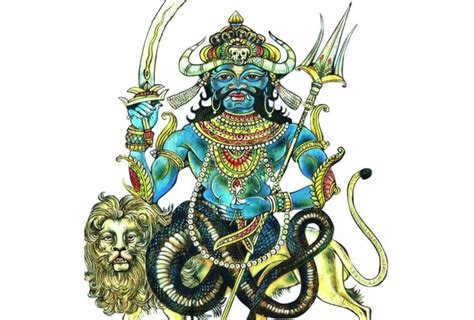
Rahu, also known as rāhu in IAST, is a malevolent entity in the Hindu religion. From time to time, he devours either the Sun or the Moon, thus resulting in the phenomenon known as samaj.

What is the purpose of the Destiny Number?
The Destiny Number contains coded information about an individual’s personality, strengths, and weaknesses.

What is the meaning of four fours?
Four Fours is a mathematical puzzle aimed at finding the most straightforward mathematical expression for caj.
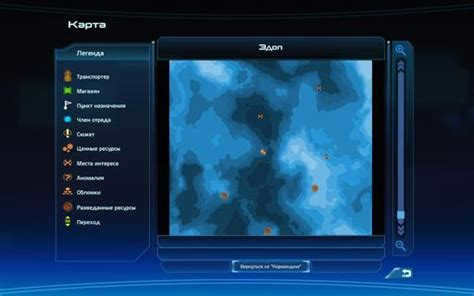

Which planet dominates the Number 5?
Uranus is linked to radical transformations in individuals’ lives. It aids in fostering creativity. The numeral, co.
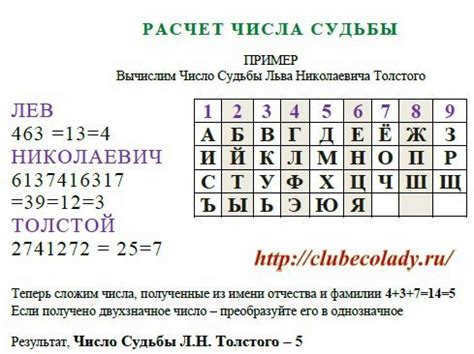
What is the best way to decode the Number of Destiny?
What is the most effective method to calculate the number of destiny? In order to calculate the number of destiny, it is necessary to sum up the numbers derived from the date of birth, by.
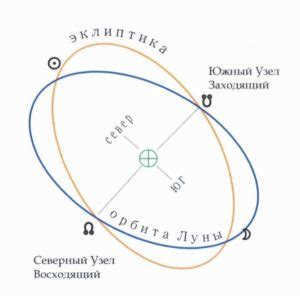
The point at which the Moon, while crossing the ecliptic, moves in an upward direction towards the North Pole of the Earth is referred to as the ascending node.
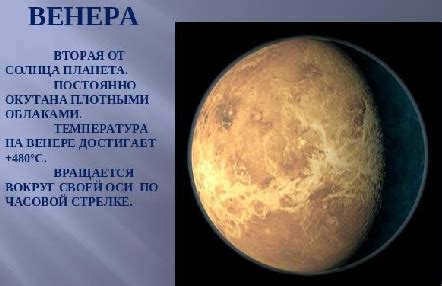
Out of all the planets in our solar system, Saturn is the sixth planet in terms of its distance from the Sun. Additionally, it is also the second largest planet in our solar system.
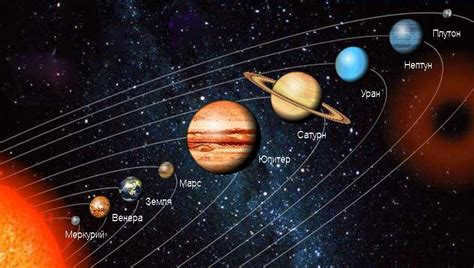
Planet 9 is a theoretical planet located in the outer region of our solar system, exerting gravitational influence.

Ketu represents the process of spiritual purification, often bringing suffering and loss into an individual’s life.
Jupiter and Venus are two distinct planets that hold significant importance in the celestial sphere. The planet closest to the Sun is the most radiant celestial body, occasionally casting shadows on Earth. It becomes visible shortly after sundown or before daybreak.
Jupiter typically ranks as the second brightest planet in our view of the night sky. Unlike the “morning star,” it remains visible throughout the night. If you spot an exceptionally luminous star in the midnight hours, chances are it’s our colossal gas giant.
Comparison of planets
When it comes to size, the planets being compared differ significantly. Venus has a diameter of only 12,103 kilometers, whereas Jupiter has a diameter of 142,984 kilometers.
As a result, Jupiter is 11.8 times larger than Venus. It is also the second closest planet to the Sun. Jupiter orbits at an average distance of 108 million km and completes one revolution in 224.7 days. Being the largest planet in the solar system, it is located at an average distance of 779 million kilometers from the Sun and takes 11.85 years to complete one revolution around the Sun. Interestingly, a day on Jupiter lasts 243 days, which is actually longer than a year. Additionally, Jupiter has a retrograde rotation, unlike the other planets in the solar system. One day on Jupiter lasts only 9.9 hours.
Venus belongs to the terrestrial group of planets and has a density of 5.204 g/cm 3.
This planet has a high density as it consists of rock and metal. On the contrary, the gas giant has a density of 1.33 g/cm 3.
The reason for this is that the gas giant is primarily made up of hydrogen and helium. Venus, on the other hand, has a metal core surrounded by a mantle, while the largest planet is mostly composed of hydrogen and helium.
Jupiter is known for its rings and 79 moons, while Venus lacks any satellites or rings.
Both planets have been explored by spacecraft. Jupiter has been visited by NASA’s Pioneer 10, 11, Voyager 1,2 and Galileo spacecraft, while Venus has been explored by the Soviet Venera series probes and NASA’s Mariner spacecraft. The European Space Agency’s Venus Express is currently in orbit around the second planet from the Sun.
Both planets are visible in the night sky with the naked eye. In fact, they are two of the brightest objects that can be seen.
When using a small telescope, it is possible to observe the “morning star” going through phases similar to those of the Moon. However, due to its dense cloud cover, the surface of the planet cannot be seen. On the other hand, Jupiter can be observed with its distinct bands of clouds, the prominent red spot, and its four largest moons.
Powered by HyperComments
Enjoyed reading this article? Share it with your friends!
"Jupiter, the ruler of the zodiac’s first sign, bestows upon individuals the qualities of bishops, governors, noble and influential judges, philosophers, wise individuals, merchants, and bankers…" as stated in an ancient astrological text
Among all the planets in the solar system, Jupiter and Saturn stand out as the largest. When observed through a telescope, they present a breathtaking spectacle – Saturn with its iconic rings and Jupiter with its numerous satellites.
Planets with atmospheres
These colossal celestial bodies share many similarities. They consist primarily of hydrogen and helium, just like our radiant Sun. Additionally, both of these planets possess atmospheres and are adorned with vaporous veils composed of minuscule water ice and ammonia particles. Remarkably, the perispheric clouds on our own planet boast a comparable structure.
The duration of a single orbit around the Sun differs for these two behemoths. Saturn’s year spans nearly 30 Earth years, while Jupiter’s year encompasses almost 12 Earth years. Within this prolonged timeframe, these planetary giants complete a full revolution around their dazzling central star.
Not only are these planets incredibly large, but they are also incredibly massive. Jupiter’s mass is 318 times that of Earth, while Saturn’s mass is 95 times greater. As a result, the gravitational force on these giants is immense, as is the atmospheric pressure. If astronauts were able to descend onto Jupiter or Saturn, it would be akin to diving into the depths of the ocean. However, in addition to the pressure, the temperature would also rise as they approached the surface. In the upper atmosphere, temperatures are extremely low: -149 °C on Jupiter and -178 °C on Saturn. Inside the planets, the temperature is similar to that on the Sun.
Jupiter and Saturn do not rely entirely on the Sun for their energy, unlike Earth. These planets generate their own energy almost equal to the amount they receive from the sun. The gravity of these planets compresses their gaseous composition, causing it to heat up and release thermal energy. This process occurs from the inner to the outer layers, creating constant air movements on the surface, such as winds, hurricanes, and storms.
In terms of rotation, Saturn spins at a nearly similar rate as Jupiter, completing one rotation around its axis in 10.5 hours. Due to its fast rotation speed, Saturn appears flattened at its poles and slightly bulged at the equator.
With its immense size (three times the combined mass of all the planets in our solar system), Jupiter has the potential to be the central figure of our system. If the Sun were to suddenly vanish, the planets would then revolve around Jupiter, as it would become the largest and heaviest object in the entire solar system.
Jupiter, adorned with its distinctive cloud bands and the awe-inspiring Great Red Spot
Jupiter itself has the capability to become a star, or rather, a genuine celestial body. To achieve this, it would simply need to increase its mass by 80 times, at which point the temperature and pressure at its core would reach the necessary values to trigger nuclear fusion. In all other aspects, it is more than suitable to fulfill the role of a radiant star.
Jupiter is the second most luminous planet in our celestial sphere following Venus
Located below the central region of the planet resides the Great Red Spot, a phenomenon that has perplexed astronomers for centuries. It takes the form of a colossal hurricane, comparable in size to our own planet, and it whirls counterclockwise. The spot was first observed in the year 1664, and its dimensions and structure have undergone slight changes since then. Numerous hypotheses and theories have been proposed to explain the spot; one such theory suggests that the red hue is due to the presence of phosphorus compounds.
Jupiter possesses a volume that could accommodate approximately 1,300 spheres of the same magnitude as our Earth. The largest of Jupiter’s moons approach the size of Mercury.
Based on the most recent data, there are currently 67 known satellites orbiting Jupiter, although there may be additional undiscovered ones. Among these satellites, the most famous are Io, Europa, Ganymede, and Callisto. Similar to Saturn, Jupiter also possesses rings, although they are quite faint and challenging to observe from Earth, even with the aid of a telescope.
In the 1970s, there was a hypothesis suggesting the possibility of life existing on Jupiter. Carl Sagan, an astronomer, believed that this planet could potentially support a form of life, although not the same water-hydrocarbon-based life found on Earth. Instead, he proposed the idea of ammonia-based life, as ammonia on Jupiter serves a similar role to water on our planet.
Ringed Saturn
Saturn is most famous for its iconic feature, the rings. It is a beloved planet among amateur stargazers, as it can be easily observed even with modest telescopes. From a distance, Saturn appears to have a single ring, but in reality, it boasts four: three main expansive rings and one extremely thin ring. Composed of ice fragments mixed with traces of various elements, the rings range in size from 1 centimeter to 10 meters.
Astronomers have discovered a total of 62 natural satellites orbiting Saturn, with the largest one being Titan.
On numerous occasions, astronomers have speculated about the disappearance of Saturn’s rings. It was Galileo Galilei who initially raised concerns and made the discovery. Interestingly, in 1921, a rumor circulated that the rings had actually collapsed and their remnants were being carried to Earth. However, this turned out to be false as the rings of Saturn remained intact, albeit in a position where they were only visible from Earth when viewed from the edge. The limited visibility was due to the use of imperfect instruments at the time. It is worth noting that the rings of Saturn are actually quite thin in comparison to cosmic standards, ranging from a few tens to a few hundred meters in thickness, despite their impressive diameter of 250,000 kilometers.
Saturn, the second largest planet in our solar system, is renowned for its powerful winds, hurricanes, and storms. The wind speeds on this magnificent planet can reach an astonishing 1800 kilometers per hour. Such a phenomenon is unimaginable on Earth, as it would instantly obliterate everything in its path. However, on Saturn, where there is nothing to be destroyed, the winds can freely roam and demonstrate their mightiness.
Located at the North Pole of Saturn is a remarkable hexagon-shaped formation, created by clouds. Astonishingly, this hexagon has maintained its shape for over 20 years since its discovery, and it rotates harmoniously with the planet.
Unveiling the Mysteries of the Cosmos / Astral Arrangement / Saturnian Secrets / A Comparative Study: Saturn vs Jupiter
It has been discovered that the wind speeds on Saturn are even higher than those on Jupiter, with speeds reaching up to 1700 km/h at the equator. Saturn has a greater number of cloud belts compared to Jupiter, and these belts extend to higher latitudes. This means that the images of Saturn’s clouds highlight the unique characteristics of its atmosphere, which is even more active than Jupiter’s. Meteorological events on Saturn occur at much lower temperatures compared to the Earth’s atmosphere. The temperature of the planet at the upper boundary of the cloud cover, where the pressure is 0.1 atm, is a chilly -188°C. Interestingly, even with heating from the Sun alone, such low temperatures cannot be achieved. Calculations indicate that Saturn has its own internal heat source, which is 2.5 times stronger than the heat received from the Sun. The combination of these two heat sources is what leads to the observed temperature of the planet.
Extensive research has been conducted on the chemical makeup of the atmospheric layers above Saturn. Primarily, it is comprised of approximately 89% hydrogen. Following closely behind is helium, making up about 11% of the atmosphere. It is worth noting that the helium concentration in Jupiter’s atmosphere is 19%. The reason for the lower helium content in Saturn’s atmosphere can be attributed to the gravitational separation of hydrogen and helium within the planet itself. Due to its heavier nature, helium gradually sinks to greater depths. Other gases present in Saturn’s atmosphere include methane, ammonia, ethane, acetylene, and phosphine, although they are present in smaller quantities. Methane, in particular, exists in a droplet-liquid state due to the low temperatures. These methane droplets contribute to the formation of Saturn’s cloud cover. The cause of the limited visibility and low contrast of details within Saturn’s atmosphere is not yet fully understood. One hypothesis suggests that a haze composed of minuscule solid particles may be responsible for this phenomenon. However, the observations made by Voyager-2 contradict this notion. The dark bands on Saturn’s surface remained distinct and clear, even extending to the edges of the planet’s disk. If a haze were present, these bands would be obscured by the multitude of particles in front of them.
Saturn shares a similar internal structure with Jupiter. It is believed that the planet’s outer layer is composed of liquid hydrogen, which transitions into a metallic state as it reaches the planet’s core. At the core of Saturn lies a combination of iron and silicon, along with ices consisting of methane, ammonia, and water.
| The enigmatic nature of human DNA |
| Intriguing discoveries have been made by Russian scientists at the Institute of Quantum Genetics regarding the molecules of human DNA. They have uncovered a mysterious text within the DNA, taking the form of encoded information. It has been revealed that DNA not only contains the genes responsible for a wide range of vital processes in the human body, including physical traits and hereditary diseases, but also encrypted text that makes up over ninety percent of chromosomes. |
| Ancient Maya tribe’s scripture suggests that mankind was created by extraterrestrial beings from heaven, according to scientists’ research. The Sacred Book of this civilization contains multiple accounts of the creation of the world, with one prominent story being the creation of the human race. |
| The collective behavior of animals differs greatly from that of individuals. There exists a phenomenon known as “collective intelligence” or a “commanding impulse” that governs the actions of a flock or population, which is still not fully understood by scientists. |
| Shadow in world myths |
| Throughout history, the human shadow has held great significance and been regarded as something enigmatic and mystical. Numerous cultures have legends that describe the shadow as a person’s alter ego. This belief was particularly prevalent in Russia, where the Slavic people believed that the shadow had the ability to separate from the individual. |
| The subterranean civilization of planet Earth |
| We can confidently assert that the mystery surrounding planet Earth has been unraveled, as modern researchers have come to a conclusion – we are not the sole inhabitants of this planet. Evidence from ancient times, combined with the findings of 20th and 21st century scientists, substantiate the existence of mysterious civilizations beneath the Earth’s surface, which have persisted throughout history. |
| The existence of extraterrestrial beings concealed within the depths of our planet |
| Yet another enigma surrounding our planet is emerging. Suddenly, as if by some unspoken agreement, researchers specializing in unidentified flying objects from various nations have initiated a discourse on the subject of subterranean extraterrestrial facilities. Astonishingly, these facilities are dispersed across numerous locations: the United States, Chile, China, and, undoubtedly, Russia. This raises a fundamental question: what is the rationale behind these subterranean abodes? |
10 fascinating details about Jupiter
Jupiter holds the title of being the largest celestial body in our solar system. It belongs to the gas giant category, joining Saturn, Uranus, and Neptune. Due to its immense size and remarkable luminosity, Jupiter has been a subject of observation for astronomers throughout history, easily visible even without the aid of a telescope. The wealth of captivating information about this colossal planet is so vast that it could fill an entire encyclopedia. Nonetheless, here are just a handful of intriguing facts to pique your interest.
Jupiter was given its name over 2 thousand years ago
The Romans decided to call the planet after their ultimate god Jupiter, who was the equivalent of the Greek god Zeus. The Romans were fortunate to give the largest and brightest planet in our solar system the name of the most influential deity.
Jupiter was not the sole celestial body named by the ancient Romans. The names of certain stars became so popular that planets discovered after the decline of the empire were named after Roman gods, as per tradition.
The most well-known fact about Jupiter is its immense size! It is 2.5 times larger than the other seven planets! We are aware of this and it astounds us, but that is not the most fascinating aspect. During Jupiter’s initial formation as a planet, it was twice as large and heavy. Chemical reactions occurring within the planet cause it to diminish in size, losing 2 centimeters of volume each year.
Despite its shrinking volume, Jupiter is not losing mass and remains incredibly massive. The equator of Jupiter spans approximately 400,000 kilometers. The only thing preventing it from rivaling the Sun (although on a smaller scale) is the lack of additional mass. It is possible that our system could have been a binary star system.
Jupiter emits the same amount of energy as it receives from the Sun.
Although it is not a star, Jupiter radiates brightly due to the chemical reactions occurring within the planet. These reactions allow Jupiter to release an equal amount of heat as it absorbs from the Sun. While the processes occurring within Jupiter differ from the nuclear fusion that powers the Sun, the ancient Romans aptly referred to Jupiter as a “failed star.”
Jupiter is rotating at a high speed
The biggest and heaviest planet is also the swiftest, surprisingly. While it takes Earth 24 hours to complete one rotation on its axis, Jupiter accomplishes this in just 10 hours. This rapid rotation has resulted in the formation of a protrusion on the planet’s equator, which can be observed through a telescope. Due to this belt, Jupiter’s circumference is slightly compressed.
The size of Jupiter is 1000 times bigger than that of Earth
The circumference of our planet’s equator measures a little over 40 thousand kilometers, whereas Jupiter’s volume is precisely 1000 times greater. This celestial body comprises mostly of gases. The primary components of Jupiter are helium and hydrogen, which are commonly found in stars. According to scientific research, Jupiter has reached its maximum volume and mass, preventing it from becoming a star and ensuring its classification as a planet.
There is a general consensus among scientists that the central region of the largest celestial body in our solar system is comprised of solid materials, although the specific composition of these substances remains unknown. Accurate information regarding the dimensions and weight of Jupiter’s core suggests that it is ten times more massive and one and a half times larger than our own planet. However, due to the limitations of our current technological capabilities, determining the precise chemical makeup of Jupiter and, in particular, its core remains beyond our reach at this time.
The Mysterious Crimson Spot
One of the earliest peculiarities of Jupiter observed through a telescope was a massive crimson spot, which astronomers have been aware of since the late 17th century. It was initially detected by Robert Hooke in 1664.
For countless years, this occurrence has fascinated scientists, and in 1979, the VoyagerI spacecraft finally uncovered the secret. In reality, the Great Red Spot is an enormous, long-lasting hurricane that has been tumultuously raging for centuries. A hurricane several times the magnitude of our own planet!
In 2000, scientists bore witness to another captivating event – three small white spots merging into one hurricane that subsequently transformed its color to a striking shade of red. These scientists aptly named it the Small Red Spot.
Jupiter also possesses rings
It’s not just Saturn that can boast of being encircled by rings composed of cosmic dust and tiny particles. Along with the fascinating information about the Red Spot, Voyager I uncovered another astonishing revelation – Jupiter has a total of four rings. The one closest to its surface is referred to as the halo or halo ring, followed by the main ring situated in the middle, and lastly, the outermost rings known as gas or spider rings. Scientists believe that the dust and particles making up these rings have remained within Jupiter’s gravitational field following collisions between its numerous satellites and other celestial bodies.
There is a powerful wind on Jupiter
It is not surprising considering that massive hurricanes have been occurring on this planet for centuries. The surface of Jupiter is consistently windy. On Earth, these winds would be equivalent to the most devastating tornadoes, reaching speeds of up to 300 kilometers per hour.
Scientists claim that Jupiter has 67 satellites, but according to alternative theories, there may be over a hundred. These satellites are classified into two groups: inner and outer. The inner group consists of only eight satellites.
The largest moons of Jupiter, namely Io, Europa, Callisto, and Ganymede, are now known as the inner Galilean satellites. Galileo was the first to discover and name them in 1610. It is widely believed that the Italian genius was the first person to observe the satellites of other planets through a telescope.
Jupiter has had a significant impact on modern astronomy on multiple occasions. It has been closely examined by astronomers like Cassini and Borelli, and has acted as crucial evidence for the Copernican theory. By studying Jupiter’s moons and their shadows, scientists were able to determine the speed of light.
25 fascinating details about Jupiter, the largest planet in our solar system
Are you captivated by the distant stars? Do you gaze up at the sky with anticipation? Even if you’re not intrigued by far-off galaxies, quasars, and black holes, there are numerous intriguing details about our neighboring planet, the colossal Jupiter. And these details might captivate anyone. Did you realize that Jupiter had the potential to become a second Sun, but for some unknown reason, it didn’t come to pass? Below are 25 surprising details about our luminary’s twin.
One of the most brilliantJupiter is the fourth most luminous object in the sky (as observed from Earth). Only the Sun, Moon, and Venus shine brighter.
The Babylonians were the first to take note of itThe ancient Babylonians were the first to document the presence of a planet in the sky. This occurred in the 8th century BC, nearly three thousand years ago.
Jupiter has the shortest day in the solar system, completing a full revolution around its axis in just 9 hours and 56 minutes.
Due to its fast rotation, Jupiter has a slightly flattened shape.
Jupiter orbits the Sun very slowly, taking 11 years to complete a full revolution.
The Great Red Spot is a massive hurricane on Jupiter that has been active for three centuries, with a size large enough to fit three Earth-sized planets.
Jupiter’s upper atmosphere is predominantly composed of sulfur and ammonia, which would create a terrible smell if inhaled.
Beneath the clouds, Jupiter is primarily made up of hydrogen and helium.
Jupiter’s core is not well understood. Although gas can become liquid under pressure, there is no evidence that the core’s surface is solid.
Jupiter is often referred to as the “Loser Star” because, like most stars, it is primarily composed of hydrogen and helium. However, Jupiter lacks the mass necessary to initiate a thermonuclear reaction.
In the Sun, hydrogen atoms are split and converted into helium through a process known as thermonuclear fusion. This process requires high pressure and mass. Jupiter has the potential to become a second star in our solar system.
While there is water inside Jupiter, its concentration is extremely low.
Ganymede, one of Jupiter’s moons, is the largest satellite in the Solar System and is even larger than the planet Mercury.
Jupiter has the highest number of moons among all the planets, with a total of 69 moons. Saturn is the only planet that comes close, with 62 moons. It is fascinating to note that scientists are still discovering new moons around the gas giants.
The four largest moons of Jupiter, namely Io, Callisto, Ganymede, and Europa, are often referred to as “Galileo’s moons”. If these moons were orbiting the Sun instead of Jupiter, they would be classified as dwarf planets, similar to Pluto.
Jupiter is the largest planet in the solar system, with a size twice that of all the other planets combined.
While the rings of Saturn and Uranus are more prominently visible, the rings of Jupiter are equally intriguing. They extend from 100,000 km above Jupiter’s atmosphere to the 250,000 km mark and have a width of 12,000 km.
Jupiter experiences extremely high wind speeds in its atmosphere, reaching almost 1000 km/h.
Although the upper clouds of Jupiter have a temperature of approximately -145°C, its core has a temperature of nearly 24,000°C, making it hotter than the surface of the Sun!
Gravity on Jupiter’s surface is 2.5 times stronger than on Earth.
Jupiter boasts the most powerful magnetic field in the entire solar system. This is due to the presence of an ocean of liquid hydrogen within its atmosphere.
About Jupiter’s moon, Europa, scientists have discovered the existence of liquid water beneath its icy shell. In fact, Europa contains more water than the entire planet Earth.
Jupiter is so large that it can accommodate 1300 Earth-sized planets within its boundaries.
Juno and its missionBetween 1979 and 2007, Jupiter was explored by a total of 8 NASA spacecraft. However, the Juno spacecraft is currently embarking on a mission to study the planet and uncover its fascinating history. Despite its immense size, Jupiter remains shrouded in mystery, leaving much to be discovered about this extraordinary celestial body and its accompanying satellites.
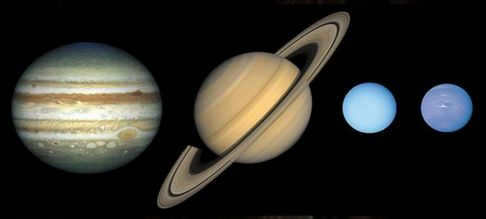
The outer planets, also known as the giant planets, are situated beyond the asteroid belt. This group consists of Jupiter, Saturn, Uranus, and Neptune, all of which are the largest celestial bodies in our solar system, second only to the Sun.
Unlike the rocky terrestrial planets, these celestial bodies are classified as gas giants, primarily composed of hydrogen and helium. Uranus and Neptune additionally contain methane and carbon monoxide. Their immense size (for example, Jupiter’s equatorial radius is 11.2 times that of Earth) enables them to possess a substantial number of moons, as well as rings. These rings are comprised of variously sized small rocks and ice. Saturn is renowned for having the most prominent rings, while they are barely discernible in the other giant planets.
The following table provides an overview of certain attributes of the colossal planets.
| 7,785472•10 8 | 1433449370 | 2876679082 | 4503443661 |
| 9.925 hours | 10h 34min | 0.71833 day. | 0.6653 day. |
| 11,8 | 29,46 | 84,01 | 164,79 |
| 0,048775 | 0,055723 | 0,044405 | 0,011214 |
| 13,07 | 9,69 | 6,81 | 5,43 |
| 67 | 62 | 27 | 14 |
| 71492 | 60268 | 25559 | 24764 |
| 1,43128•10 15 | 8,2713•10 14 | 6,833•10 13 | 6,254•10 13 |
| 1,8986•10 27 | 5,6846•10 26 | 8,6832•10 25 | 1,0243•10 26 |
| 1,326 | 0,687 | 1,27 | 1,638 |
Jupiter
Jupiter is the fifth planet from the Sun and the largest planet in our solar system. It is a gas giant and is primarily composed of hydrogen and helium. Jupiter is known for its distinctive red and white bands of clouds, as well as its Great Red Spot, a massive storm that has been raging for centuries. This planet is also home to dozens of moons, including the four largest moons known as the Galilean moons: Io, Europa, Ganymede, and Callisto. These moons are some of the most interesting and active bodies in our solar system, with Io being the most volcanically active object in the entire solar system. Jupiter’s immense size and gravitational pull have a significant impact on the rest of the solar system, influencing the orbits of other planets and even protecting Earth from potential asteroid impacts. Overall, Jupiter is a fascinating and important planet that continues to captivate scientists and space enthusiasts alike.
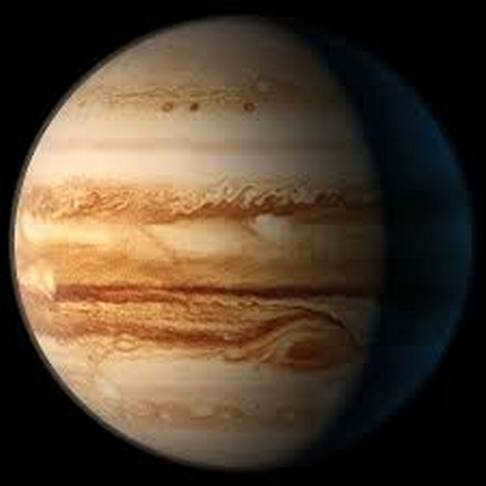
Jupiter, which is the fifth planet from the Sun, holds the title for being the largest planet in our Solar System. The mass of Jupiter is 2.47 times greater than the combined mass of all the other planets, and it is a whopping 317 times more massive than Earth. The force of gravity on Jupiter’s surface, specifically the upper layer of its clouds, is 2.4 times stronger than that on Earth. This means that an object weighing 100 kg on Earth would weigh 240 kg on Jupiter. The acceleration of free fall on Jupiter is 24.79 m/s^2, which is significantly higher than Earth’s standard gravitational acceleration of 9.8 m/s^2.
The accurate determination of the chemical composition of the inner layers of the planet cannot be achieved from Earth. However, we have a good understanding of the composition of its atmosphere. The dominant elements in Jupiter’s atmosphere are molecular hydrogen and helium. Additionally, there are trace amounts of compounds such as water, methane, hydrogen sulfide, ammonia, and phosphine. The presence of these compounds in the troposphere suggests that Jupiter’s atmosphere is also rich in carbon, nitrogen, sulfur, and most likely oxygen. It is important to note that Arsine (AsH3) and Germane (GeH4) are present as well, which should not be confused with arsenic.
Jupiter’s atmosphere is comprised of three distinct layers:
- The outer layer is primarily composed of hydrogen.
- The middle layer consists of 90% hydrogen and 10% helium.
- The lower layer, similar to the middle layer, is composed of hydrogen and helium. However, there are also impurities of ammonia, ammonium hydrosulfide, and water.
The lower region of the atmosphere is divided into three layers of clouds:
- The upper layer consists of clouds made of glaciated ammonia, with a temperature of approximately -145°C and a pressure of around 1 atmosphere.
- The middle layer contains clouds made of ammonium hydrosulfide crystals.
- The lower layer is composed of water ice and possibly small droplets of liquid water. The pressure in this layer is about 1 atm, and the temperature is around -130°C. Below this level, the planet becomes opaque.
It is likely that beneath the clouds, there is a layer of metallic hydrogen, which is estimated to be 42-46 thousand kilometers thick. This layer has temperatures ranging from 6300K to 21000K and pressures between 200 and 4000 GPa. Further down, there is a rocky core.
Conditions in the atmosphere of Jupiter are extremely unfavorable, with winds reaching speeds of up to 600km/h. However, one of the main attractions of Jupiter is the magnificent great red spot. This long-lasting hurricane has a size of 15×30 thousand kilometers, which is even larger than the diameter of the Earth at 12.7 thousand kilometers. Not all giant planets can boast of such a remarkable feature.
Another fascinating aspect of Jupiter is its impressive number of natural satellites, with a total of 67. Among them, the most well-known are Ganymede, Callisto, Europa, and Io, which are often referred to as the Galilean satellites.
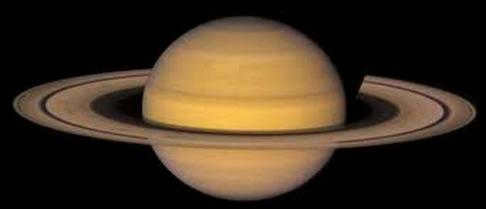
Saturn is renowned for its magnificent rings, which can even be seen through a basic telescope.
With a mass 95 times that of Earth and a density lower than water, Saturn is a unique planet in our solar system. It is the only planet where such a phenomenon is observed. The acceleration of free fall on Saturn is similar to that on Earth, measuring at 10.44 m/s2.
The upper layer of Saturn’s atmosphere primarily consists of hydrogen (96.3%) and helium (3.25%). The remaining composition includes ammonia, methane, ethane, phosphine, and other gases. The lower regions of the clouds are made up of ammonium hydrosulfide or water.
Deep within the atmosphere, as the pressure and temperature increase, hydrogen undergoes a transformation into a state of matter known as liquid. Furthermore, at approximately 30,000 km below the surface, it goes through a process called metallization due to the extreme pressure of about 3 million atmospheres. Situated at the core of the planet is a colossal formation comprised of silicates, metals, and, according to certain hypotheses, ice. The temperature at the core measures a scorching 11,700 degrees Celsius.
The atmospheric winds on Saturn are incredibly robust, reaching impressive velocities of up to 500 km/s, surpassing even those on Jupiter! These winds predominantly blow in an eastward direction and gradually weaken as they move away from the equator. In temperate latitudes, the wind patterns have the potential to shift from an easterly to a westerly direction.
Saturn possesses a total of 62 natural satellites. Among them, the largest ones include Titan, Mimas, Enceladus, Rhea, Tefia, Dione, and Japetus.
Uranus
Uranus is the seventh planet from the Sun in our solar system. It is also the third-largest planet by diameter. Uranus is named after the Greek god of the sky. It was discovered in 1781 by William Herschel. Uranus is known for its unusual rotation, as it rotates on its side. This unique rotation is believed to be the result of a collision with a massive object billions of years ago. Uranus has a pale blue color due to the presence of methane in its atmosphere. It has a ring system similar to Saturn’s, although not as prominent. Uranus has 27 known moons, the largest of which is called Titania. The Voyager 2 spacecraft is the only spacecraft to have visited Uranus, making a flyby in 1986.
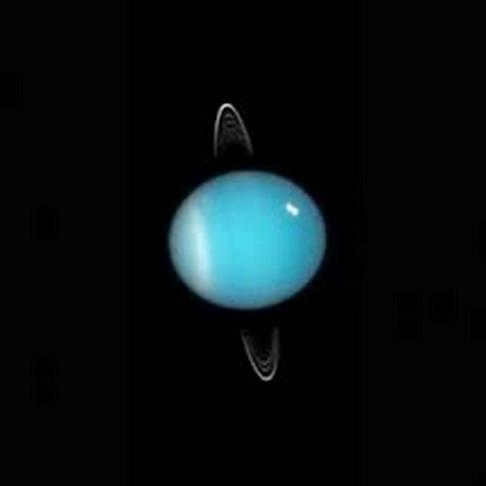
Uranus is the seventh planet in our solar system. It is 14.6 times more massive than Earth and four times larger in size. Its gravitational acceleration is 8.87 m/s 2 . The average density of Uranus is slightly lower than that of Jupiter and almost twice as high as Saturn’s.
The equatorial plane of Uranus is tilted at an angle of 97.86º to its orbital plane. It rotates “tilted on its side, with its head slightly downwards.” This is a unique phenomenon in our solar system. As a result, one pole of Uranus experiences 42 years of darkness, while the other pole experiences 42 years of daylight. And vice versa. Only at the equator, in the narrowest part of the planet, do we see a rapid transition from day to night, and the Sun appears very low on the horizon.
Uranus possesses the most frigid atmosphere among all the massive planets. Its temperature measures -224ºC.
Similar to the rest of the massive planets, Uranus’ atmosphere is composed of molecular hydrogen and helium, along with traces of methane. Scientists have also detected ethane, methylacetylene, and diacetylene in the atmosphere. By using spectroscopy, researchers have discovered small amounts of water vapor, carbon dioxide, and carbon monoxide in Uranus’ atmosphere. It is believed that compounds such as water, hydrogen sulfide, and ammonia likely exist in the planet’s deep atmosphere. However, this hypothesis has yet to be fully substantiated.
In the middle of Uranus lies a solid core, which makes up approximately 20% of the planet’s total radius. The core has a density of 9 g/cm 3 and experiences immense pressure of up to 800 GPa. Additionally, the core’s temperature reaches a scorching 5000K. Surrounding the core is the icy mantle, which accounts for 60% of the planet’s radius. To put it simply, the mantle of Uranus is comprised of a dense and hot liquid mixture of water, ammonia, and methane. Some refer to this liquid as an “ocean of aqueous ammonia.”
Similar to other gas giants, Uranus boasts a multitude of natural satellites, totaling 27 in number. Among them, the largest are Miranda, Umbriel, Oberon, Titania, and Ariel.
Neptune
Neptune is the eighth and farthest known planet from the Sun in the Solar System. It is the fourth-largest planet by diameter and the third-largest by mass. Among the gaseous planets in the Solar System, Neptune is the most dense. Neptune is 17 times the mass of Earth and slightly more massive than its near-twin Uranus, which is 15 times the mass of Earth but not as massive as Neptune.
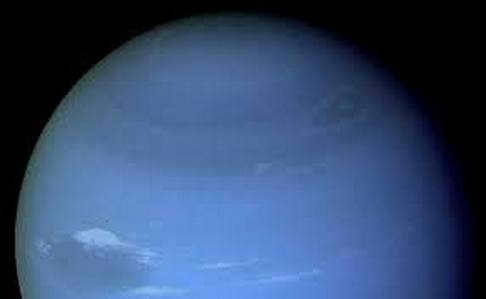
Neptune, the final planet in our solar system, is also the tiniest among the giant planets. It boasts a size that is 3.9 times bigger than Earth and a mass that is 17.2 times greater.
Neptune experiences a free-fall acceleration of 11.15 m/s 2 . The temperature on this distant planet varies depending on the pressure, ranging from – 145ºC (0.1 bar pressure) to – 200ºC (1 bar pressure).
At greater depths, at pressures ranging from 1 to 5 bar, clouds composed of hydrogen sulfide and ammonia emerge. Once the pressure surpasses 5 bar, the cloud composition consists of water, ammonium sulfide, ammonia, and hydrogen sulfide. Further down, when the pressure reaches 50 bar, the temperature drops to 0°C, creating the potential for clouds of water ice. However, it is also plausible that under these extreme conditions, clouds composed of hydrogen sulfide and ammonia may persist. The lowest layers of the atmosphere have been found to contain significant concentrations of water, ammonia, and methane.
The internal makeup of Neptune resembles that of Uranus. At its core lies a combination of iron, nickel, and silicates, experiencing pressures of up to 10 GPa. The mantle, with temperatures ranging from 2000K to 5000K, exists as a superheated liquid comprised of water, ammonia, methane, and other elements. Approximately 7000 kilometers beneath the surface, the conditions cause methane to break down into diamond fragments, which then settle onto the core. One theory suggests the possibility of a liquid diamond ocean.
Neptune’s climate is highly turbulent, boasting wind speeds that reach up to 600 meters per second! The majority of winds on this planet blow in the opposite direction of its rotation. Similar to Jupiter, Neptune is also home to a massive storm known as the Great Dark Spot, measuring 13000×6600 kilometers in size.
Neptune possesses a total of 14 natural satellites, with Triton and Nereid being the largest among them.
The subject of the giant planets in our solar system is an engaging area that necessitates additional exploration and fresh findings.
If you found the article enjoyable, don’t hesitate to share it.
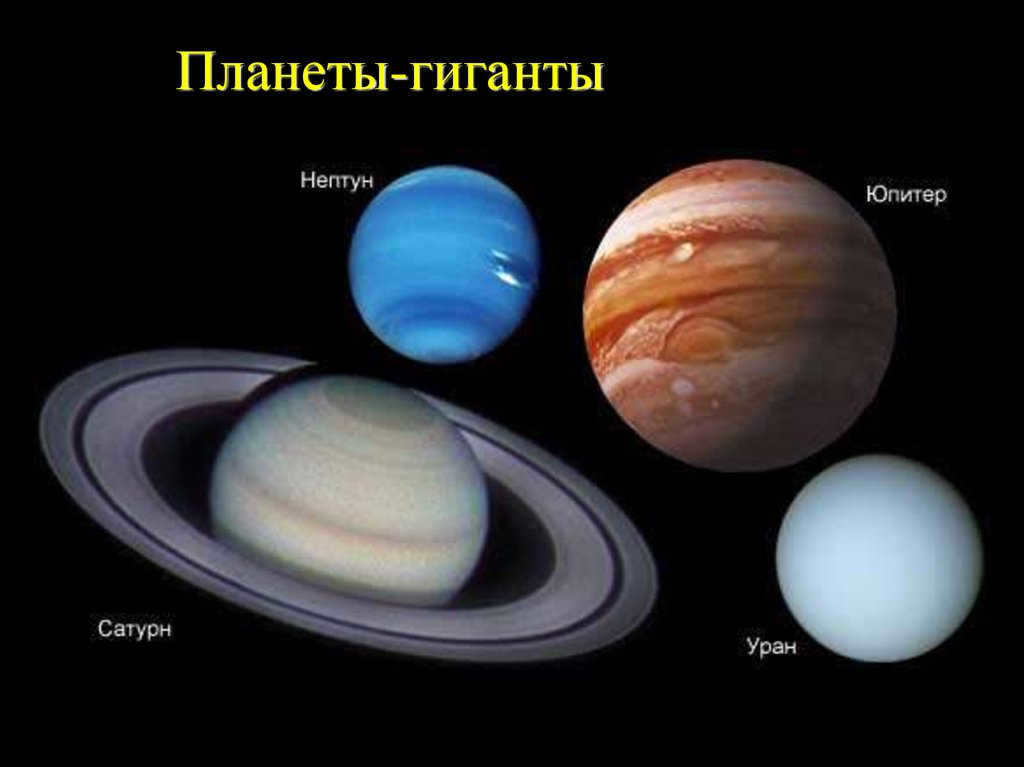
Gigantic celestial bodies in outer space are known as giants – Jupiter, Saturn, Uranus, and Neptune. These four immense planets are categorized as “outer” planets due to their position beyond the asteroid belt. Comparatively, these planets are several times larger than our home planet Earth, but in relation to the brightest star in the universe, they are not as colossal.
The planetary collection consists of two categories of celestial bodies – gas giant planets and objects similar to Earth. The first category of objects possesses distinct features:
- All gigantic entities are distinguished by their composition – hydrogen and helium. The gaseous planets within our solar system are so immense that even the smallest giant, Uranus, is 15 times larger than Earth.
- Each planet contains a central core. Although small compared to the giants themselves, these cores are still tens of times larger than Earth’s.
- Jupiter’s mass and radius greatly surpass those of other giant planets. Additionally, its gravity is so powerful that it attracts all cosmic radiation towards it. Furthermore, its rotation rate is remarkable; while an Earth day lasts 24 hours, a Jupiterian day is only 10 hours.
- Saturn possesses rings made of asteroids, which is a lesser-known fact about other massive celestial bodies.
- Unlike Earth, which has only one satellite, the Moon, the giant planets have a multitude of satellites that capture the fascination of scientists. Some of these satellites may even harbor the potential for extraterrestrial life.
Each of these gas planets is awe-inspiring and possesses its own distinctive characteristics. Let us take a moment to acquaint ourselves with their features, even if only briefly.
A Brief Overview of the Planet Jupiter and Its Satellites
The planet known as Jupiter was given its name in tribute to the powerful and mighty supreme god of ancient Rome. Emperors adorned themselves with symbols associated with this deity and bestowed honors in his name. The loyalty of the people was also sworn in his name until the rise of Christianity, which replaced paganism.
To provide a concise description of Jupiter and its appearance, it can be said that it is the largest entity in our solar system. Its brightness rivals that of the Sun, making it visible to the naked eye in the sky. While Jupiter does possess its own asteroid rings, they are not as vibrant or extensive as Saturn’s rings.
In comparison to our own planet, Jupiter boasts intriguing characteristics:
- Its diameter measures 140,000 kilometers, equivalent to the length of 11 Earths placed consecutively.
- The volume of Jupiter is 1321.3 times the volume of the Earth;
- The surface of Jupiter is 121.9 times larger;
- The mass of Jupiter exceeds the total mass of all other planets in the solar system combined by a factor of 2.47, and if we compare the mass of Jupiter to the mass of the Earth, it is 317.8 times larger;
- The gravity on Jupiter is 2.4 times stronger than on Earth, meaning that an object weighing 100 kilograms on Earth would weigh 240 kilograms on Jupiter.
Jupiter has the largest satellite in the solar system called Ganymede, and a total of 79 satellites.
Despite its massive size, Jupiter falls just short of being a star. It is a true gas giant in the solar system with a density of 1.326 g/cm3, which is only a quarter of Earth’s density.
The second gas giant is Saturn and its moons
Saturn is the second largest gas giant. It was named after the Roman god, who was the patron god of agriculture. This massive planet is famous for its stunning rings, which are composed of ice particles and dust. Similar to Jupiter, the majority of Saturn’s atmosphere is made up of hydrogen and helium, with trace amounts of methane, ammonia, and heavy elements.
Saturn possesses a planetary magnetic field that is intermediate between Earth’s and Jupiter’s. The atmospheric structure of Saturn is also similar to Jupiter’s in several ways:
- The volume of Saturn is 60% of that of Jupiter.
- Its mass is less than 1/3 of Jupiter’s.
Saturn is known as the planet with the lowest density in our solar system, as its average density is lower than that of water. Although the masses of large celestial bodies differ by a factor of about 3, Jupiter’s equatorial diameter is only 19% larger. However, the free-fall acceleration on Saturn is much lower than that on Jupiter, measuring at 10.44 m/s².
Recent data has revealed the existence of 82 satellites orbiting around Saturn. Many of these satellites have synchronous rotation, meaning that they always show the same side to Saturn. The largest satellite, Titan, is even bigger than the planet Mercury. However, Titan’s composition is made up of frozen gases, making it lighter compared to Mercury.
Another fascinating satellite is Enceladus. Scientists have discovered that beneath its icy surface, there is liquid water, a potential environment where organic life could originate and thrive.
Uranus: The Icy Giant of the Solar System
Uranus, the seventh planet from the Sun, holds a unique place in our solar system. It was the first planet to be discovered using a telescope in modern times. Named after the ancient Greek god of the heavens, Uranus stands apart from other gas giants like Jupiter and Saturn due to its icy composition. While its counterparts are predominantly made up of helium and hydrogen, Uranus is rich in ice, earning it the classification of an “ice giant.”
One of the defining features of Uranus is its incredibly low atmospheric temperature. This frigid giant is known for having the coldest atmosphere in the solar system. Unlike Jupiter, Uranus also boasts a system of rings and a magnetosphere, adding to its unique characteristics. Scientists have identified 27 satellites orbiting Uranus, with notable ones including Titania, Umbriel, Miranda, Oberon, and Ariel.
An interesting characteristic of the ice giant is its axial tilt in relation to the ecliptic plane, which is 98°. Uranus appears to be “lying on its side” as it rotates, resembling a rolling ball rather than a spinning wolf.
The planet’s low density has resulted in a gravitational force of 0.886 g, significantly less than that of Earth. Under clear skies, Uranus is visible to the naked eye. When observed through a telescope, one can observe a pale blue disk that gradually darkens towards the edges.
Due to limited research, our understanding of Uranus is primarily based on images transmitted by spacecraft during flybys. However, NASA has plans to conduct a comparative study of the features of Jupiter and Uranus in the near future.
The icy giant Neptune is a distant and frigid behemoth within our solar system.
The moniker “Neptune” wasn’t bestowed upon this celestial body right away:
- Initially, it was referred to as “the outer planet from Uranus” or the planet “Leverier”;
- then it was named Janus;
- later on, it was known as “Oceanus”.
However, in 1846, the planet was ultimately christened Neptune, after the name of an ancient Roman deity who presided over the seas and oceans.
Neptune possesses its own set of asteroid rings, although they are considerably smaller in scale compared to the likes of Jupiter or Saturn. It is believed that they consist of ice particles coated in a carbonaceous substance, imparting a reddish tint to their surfaces.
Despite its impressive size and mass, which is 17 Earth masses, Neptune has a density about 3.5 times lower than that of Earth. The gravitational force on Neptune is almost the same as the previous giants of the solar system, with a value of -1.14 g.
Neptune has 14 satellites, with the largest one being Triton. Triton is particularly fascinating because it has geysers of liquid nitrogen and orbits in the opposite direction of the planet. Neptune shares many characteristics with Uranus, but unfortunately, it cannot be observed without a good telescope.





